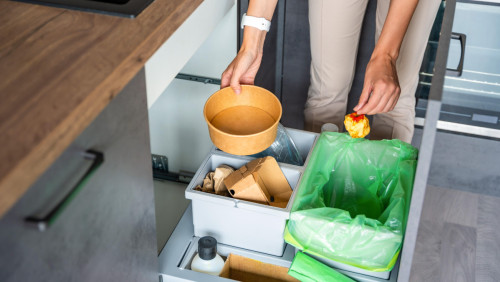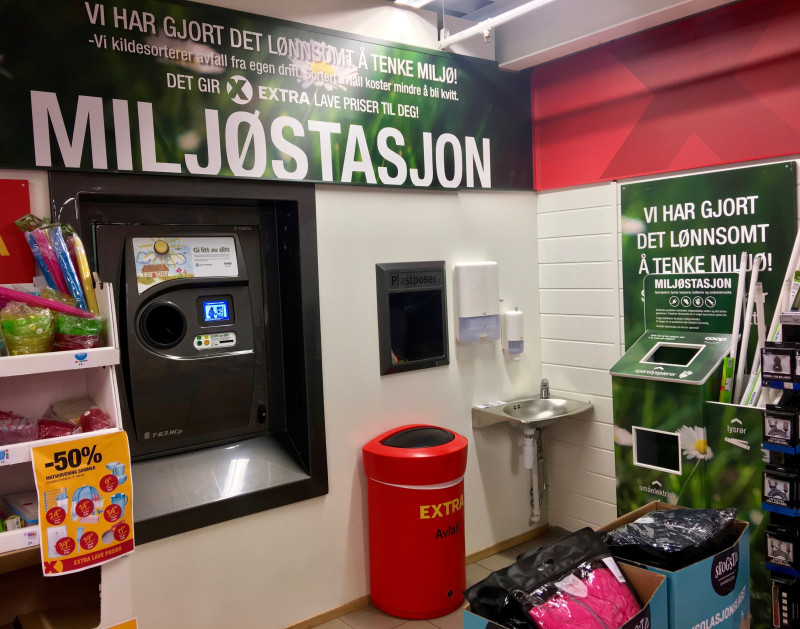English
Norwegians produce more waste but segregate it better. Will they meet the EU targets?

Residual waste is most commonly disposed of in Norwegian households. stock.adobe.com/licencja standardowa
In 2024, the average resident of Norway generated 379 kilograms of waste – over 1% more than the previous year. However, according to data from Statistics Norway (SSB), Norwegians have become more engaged in waste segregation.
In the land of fjords, a total of 2,123 thousand tonnes of municipal waste was collected last year, marking a 2% increase compared to 2023. At the same time, there was a 1% decrease in residual waste, which ends up in landfills or incinerators. This is the result of improved waste sorting already at the household level.
– Although the total amount of waste has increased, the decrease in mixed waste indicates a positive change – emphasizes Manju Chaudhary from SSB. The most significant difference was noted in food waste: its amount increased by 8 thousand tonnes, while residual waste decreased by 10 thousand tonnes.
Residual waste is most commonly disposed of in Norwegian households. In 2024, this type of waste accounted for 40% of all waste. Next on the list were wood waste, food waste, and cardboard (9-11%). At the same time, the recycling rate for materials in Norway continues to rise, reaching 46% last year. This includes waste directed to biogas production and composting.

In the photo: a bottle recycling station in one of the Norwegian supermarkets.Source: Photo by Wolfmann, CC BY-SA 4.0, via Wikimedia Commons
How does waste segregation look in Norway?
The waste segregation system in the land of fjords is well-developed and continuously modernized, aiming primarily to reduce the amount of waste going to landfills and increase recycling rates.
In households, waste is divided into several basic categories: paper and cardboard (newspapers, cartons, food boxes), glass and metals (jars, bottles, cans), plastic (plastic packaging, films, bags), organic bio-waste (food leftovers, peels, coffee grounds, paper filters), hazardous waste (batteries, paints, chemicals handed in at special points), and residual waste (leftovers that cannot be recycled).
In households, waste is divided into several basic categories: paper and cardboard (newspapers, cartons, food boxes), glass and metals (jars, bottles, cans), plastic (plastic packaging, films, bags), organic bio-waste (food leftovers, peels, coffee grounds, paper filters), hazardous waste (batteries, paints, chemicals handed in at special points), and residual waste (leftovers that cannot be recycled).
In many Norwegian cities, a system of colored bags is in operation: green bags for organic waste, blue for plastics, and transparent for residual waste. In some municipalities, waste is sorted manually, while in others, it goes to modern sorting facilities that automatically separate fractions based on bag color and content.
Local differences and motivation
However, it is important to remember that detailed rules may vary depending on the place of residence – each municipality sets its own procedures and waste collection schedules.
In some municipalities, fees for waste collection depend on the amount and method of segregation. Thus, residents who produce less residual waste and properly sort their waste can expect lower bills. However, this is not a nationwide standard – many municipalities apply fixed, flat-rate fees.
In some municipalities, fees for waste collection depend on the amount and method of segregation. Thus, residents who produce less residual waste and properly sort their waste can expect lower bills. However, this is not a nationwide standard – many municipalities apply fixed, flat-rate fees.
An important motivating factor for waste segregation in Norway is the deposit system for bottles and cans. A deposit (1-3 kroner) is charged for each such packaging, which can be reclaimed by returning the packaging to a machine in a store. It is one of the most effective packaging return systems in the world – Norwegians recover over 90% of beverage packaging this way.
Despite progress, Norway did not achieve the EU target of 50% material recycling for household waste by 2020. The target for 2025 has been set at 55%.
Despite progress, Norway did not achieve the EU target of 50% material recycling for household waste by 2020. The target for 2025 has been set at 55%.
Sources: SSB, environment.ec.europa.ee, IVAR, MojaNorwegia.pl
Dodaj komentarz
Wyślij
